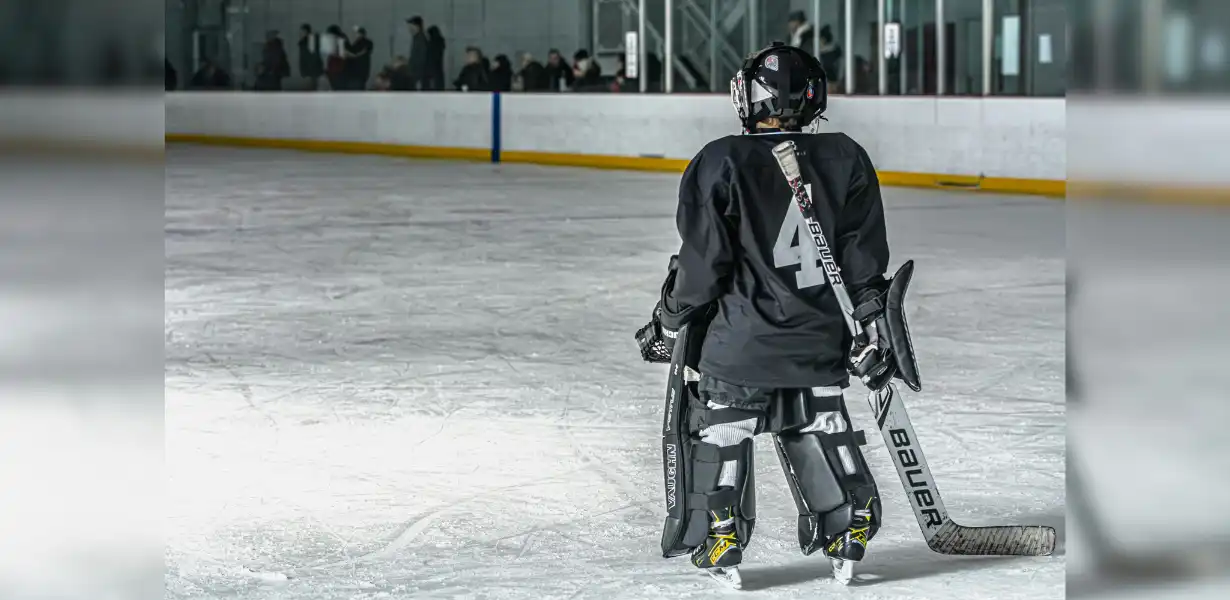For goaltenders, the stick isn’t just another piece of gear — it’s a precision tool for stopping, steering, and controlling the puck. That’s why the National Hockey League (NHL) has strict specifications governing the size, shape, and curvature of every goalie stick used in play. These measurements ensure fairness, balance, and consistency across all competition levels.
Let’s dive into the official rules defining goalie stick limits — and see how All Black Hockey Sticks (ABHS) designs sticks that combine high-end performance with full compliance.
Blade Dimensions: Keeping Control Consistent
Under Rule 10.2 — Goalkeeper’s Stick, the NHL sets clear boundaries for blade size:
• The blade must not exceed 3½ inches (3½”) in width, except at the heel.
• At the heel, the blade can reach up to 4½ inches (4½”).
• The total length of the blade, measured from the heel to the toe, must not exceed 15½ inches (15½”).
These standards prevent oversized blades that could unfairly increase surface area or block more of the net. Instead, goalies must rely on sharp reflexes, clean positioning, and stick precision to make those jaw-dropping saves.
All Black Hockey Sticks follows these guidelines exactly. Each ABHS goalie blade is designed for maximum puck control without crossing regulation lines. That means you get the legal edge — the perfect balance between rebound management and puck handling.
Paddle Length: The 26-Inch Limit
The paddle is one of the most crucial parts of a goalie’s stick — and one of the most heavily regulated.
According to the NHL rulebook, the widened portion (the paddle):
• Shall not extend more than 26 inches (26”) from the heel, and
• Shall not exceed 3½ inches (3½”) in width.
This “26-inch rule” ensures goalies can’t artificially increase their reach or coverage. The only exception is for goaltenders 6′6″ tall or taller, who may apply for a specific exemption — though even then, the maximum allowed paddle length remains 26 inches.
At All Black Hockey Sticks, every goalie paddle is engineered to meet this limit while optimizing balance and control. Using lightweight carbon fiber, ABHS keeps the paddle strong yet agile — so you can make lightning-fast transitions from the butterfly to the poke check without feeling weighed down.
Curve Restrictions: Precision Over Power
The curve of a stick plays a major role in puck handling and passing — but the NHL places strict limits on how much a goalie’s blade can bend.
Per Rule 10.2, the maximum permitted curvature is:
• ¾ inch (¾”), measured from the deepest point of the curve to an imaginary straight line from heel to toe.
This restriction prevents goalies from “scooping” or lofting the puck down the ice like a lacrosse stick. Instead, the curve must remain subtle — designed for controlled redirections, smooth clears, and crisp passes.
Shaft and Knob Requirements
The NHL also regulates the top of the stick — for safety and handling consistency.
Goalie sticks must have a white knob or approved protective covering at least ½ inch thick at the top of the shaft. This prevents the stick from slipping through a goalie’s blocker and ensures a firm grip during saves or poke checks.
Rule Enforcement and Stick Inspection
Unlike older eras of the game, where referees could call a stick measurement penalty mid-game, today’s NHL handles these checks off the ice. The Hockey Operations Department measures and verifies goalie sticks for compliance, reporting any violations to the Commissioner’s Office.
That means players can focus entirely on performance — as long as their gear is built right from the start.
All Black Hockey Sticks ensures full compliance before shipping every stick, so goalies can trust their gear meets league standards from day one.
Why These Rules Exist
These restrictions might seem technical, but they exist for good reason — to preserve fair competition and the spirit of the game.
Without these limits:
• Oversized paddles could cover too much net space.
• Deep curves could turn clears into lofted passes.
• Extra-wide blades could turn rebounds into automatic deflections.
By standardizing stick dimensions, the NHL keeps goaltending a skill-driven craft — about reflexes, timing, and hockey IQ, not oversized equipment.
Choosing the Right Stick for Your Style
Selecting the right goalie stick means balancing personal comfort with regulation limits. Consider:
• Paddle height — Shorter for low stances, longer for upright styles
• Weight balance — A well-balanced stick prevents wrist fatigue during extended play
• Material — Carbon fiber (like ABHS sticks) offers unmatched responsiveness and longevity
Remember: the right stick doesn’t just meet regulations — it fits you perfectly.
Final Buzzer
The goalie stick rule is about integrity, balance, and the beauty of precision goaltending. By setting clear standards for size, shape, and curve, the NHL ensures every save is earned — through skill, not shortcuts.
With All Black Hockey Sticks, you get a tool that meets every rulebook requirement while delivering elite-level feel, control, and confidence in the crease. Built tough, balanced right, and priced for players who love the game — it’s the perfect combination of performance and compliance.
#GoalieNation #HockeyGear #NHLRules #AllBlackHockeySticks #HockeyLife #ProtectTheCrease #GoalieStick #ABHS #HockeyEquipment

